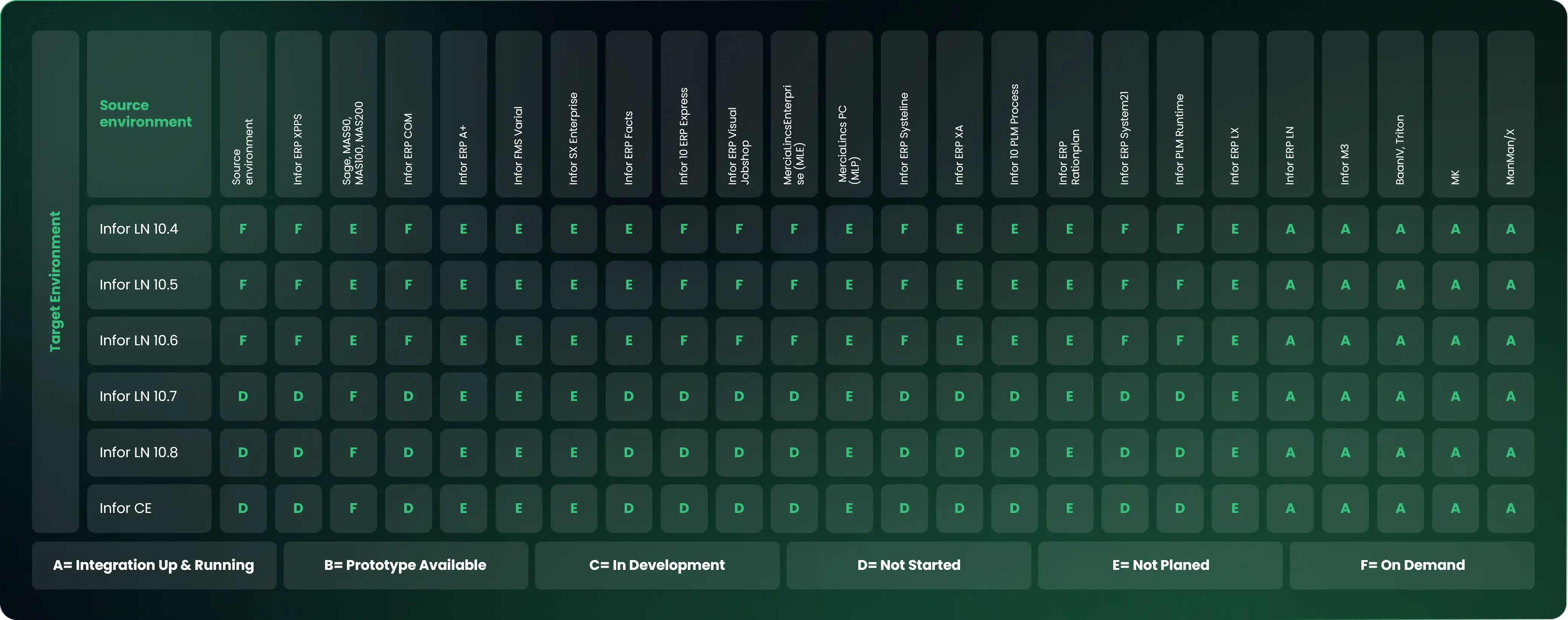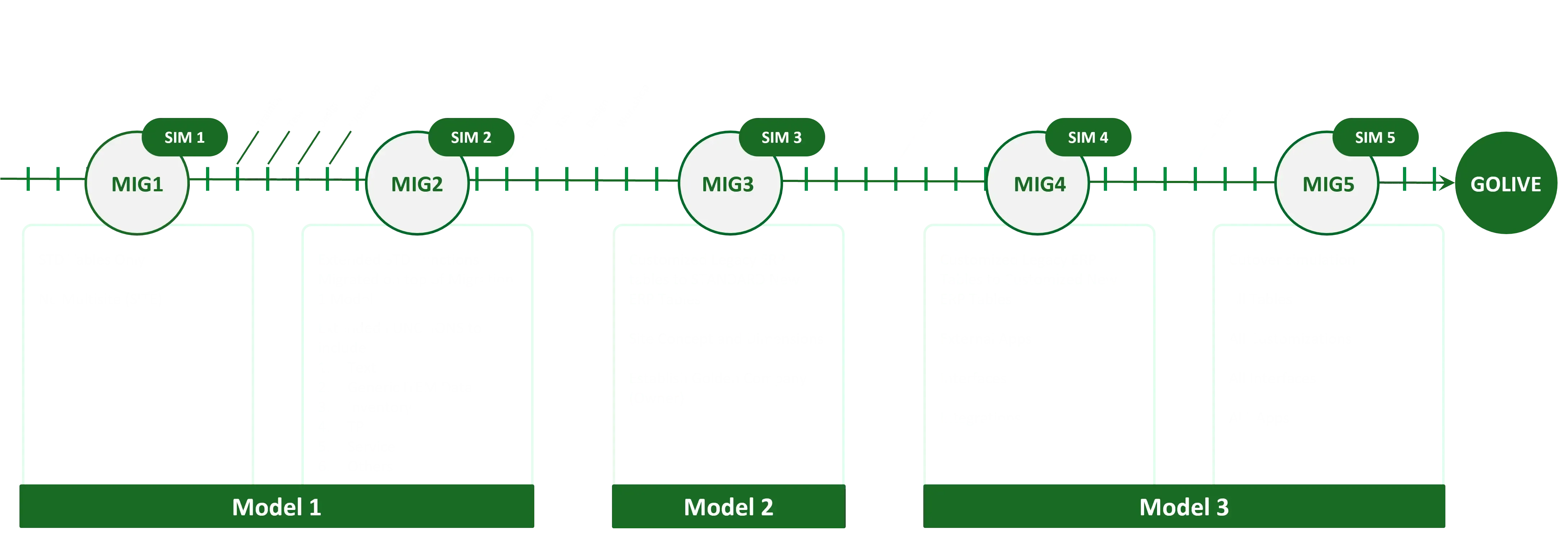Data Migration
Home / Data Migration
From Legacy to Strategy
The Infor Company grew over the last by acquiring a big number of competitors. Infor see itself as number three in the world behind SAP and ORACLE. The difference is, that ERP wise SAP and ORACLE are one product companies, Infor has in parallel more than 30 ERP systems. Even though there has never been an official announcement, we see the strong will to consolidate the product landscape. We fully support these efforts. INFOR will hardly be able to compete with 30 ERP products against the other player with having one ERP. The consolidation will come, we are convinced.
For those, that are planning to migrate to the flagship ERP on Infor, we are ready to assist.
With Matrix Migration Repository we offer a fast lane to migrate to Infor LN, the strategic ERP Solution of the Infor Roof. Everybody who is considering moving to the most powerful ERP under the roof of the Infor Company, should get in contact with us

We offer several migration path’s to the latest LN versions, consolidated in a propriety data migration tool: Matrix Migration Repository which keeps the most efficient data migration logic in one dictionary.
Up to 20 years of data migration experiences is consolidated in a framework for superfast data migration projects. Out of the general rules from the MMR, we generate and compile data import tools, by using existing standard technology out of Infor tools.
Data Migration on Premise

Data Migration Process
The Data Migration Process is designed as a phased, simulation-driven journey that ensures a controlled and successful transition from legacy ERP data structures (such as Infor LN 10.3) to the upgraded system (Infor LN 10.7). It gradually evolves from simple standard data migration to a full cutover simulation involving all tables, interfaces, and custom applications. This approach is divided into five simulations (SIM1 to SIM5), each associated with a specific migration phase (MIG1 to MIG5), culminating in the final Go-Live.
MIG1. Starting with the Basics
The first migration cycle focuses on migrating standard tables only, with no multisite or dimensional configurations involved. This is a foundational step aimed at testing the basic migration engine and validating that the dummy data can be loaded and integrated without structural changes. The goal at this stage is to establish the migration framework and prove its viability using a minimal and clean dataset.
MIG2. Adding Functional Depth
Once the standard model is proven, the second phase builds upon it by migrating extended functions such as generic item master data, inventory records, transactional processing, text descriptions, and service-related data. The system is tested more thoroughly, and dummy data is used to simulate real business activities. MIG2 helps validate that the system can handle more complex, real-world data scenarios.
MIG3. Introducing Business Dimensions
The third migration round begins the real transformation. Customized tables from version 10.3 are now mapped and migrated to the standard 10.7 tables. This is where site concepts and business dimensions are introduced, along with the creation of a "Golden Company" — a reference model that defines the master data structure and configuration for the entire organization. MIG3 also includes rule-based mapping, transformation logic, and validation of configuration data such as IC settings and integration mappings.
MIG4. Customization and Connectivity
MIG4 focuses on migrating fully customized tables from the old system into the new customized environment of LN 10.7. Beyond just table conversion, this phase incorporates integrations with external applications, middleware systems, and custom-built interfaces. This is where the enterprise landscape begins to reflect the full scope of the TO-BE architecture. Every customization is reviewed, mapped, and validated to ensure that the upgraded system will meet operational requirements.
MIG5. Final Dress Rehearsal
The fifth and final simulation is a complete cutover simulation — essentially a dry run of the production go-live. All tables, all customizations, every interface, and every external app are included. This round replicates the full system cutover in a controlled environment, allowing the project team to identify gaps, timing issues, and edge-case errors before the real transition.
Go-Live: Transition to Production
Once the cutover simulation has been successfully completed, the system is ready to go live. Final activities include validation of scenarios, completion of integration testing, setting up user roles and permissions, transferring personalizations, and configuring jobs and automation routines. The frozen zone begins at this point to ensure data consistency and integrity across systems during the switch.
Data Migration to Infor CloudEdition

Integration to the cloud is a challenge since under CE a lot of technical restrictions apply. The approach is to execute the data migration in three steps. On an on-premise system we have the latest version of Infor LN on-premise and a downloaded data dictionary of the Cloud Edition version.
Step one covers the data migration from the source to the latest on premise version. We can use the existing powerful tools and create a dataset for the latest on premise version.
Step two migrated the data set from the latest on Premise version of Infor LN to the downloaded data dictionary of the cloud edition on the on premise system. With the downloaded data dictionary of the cloud edition, we have a frozen environment to work with.

Leader in data migration, reporting tools, implementation
services, and consulting for organizations using Baan
ERP systems

